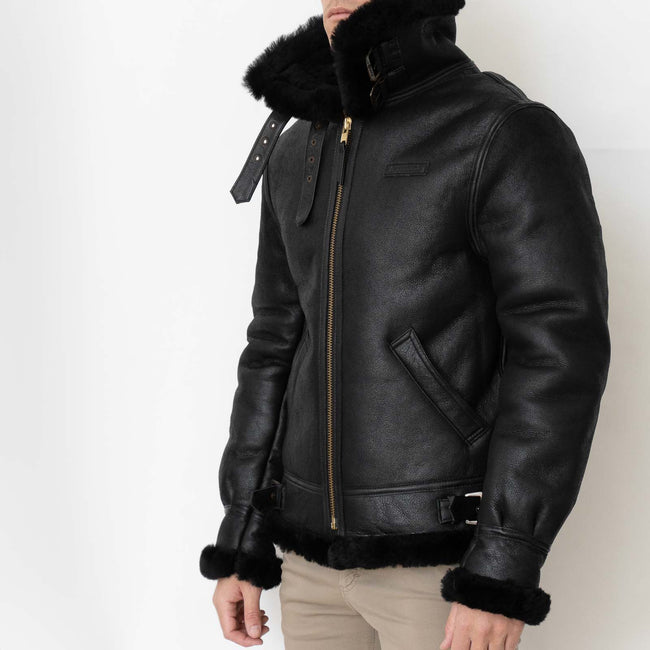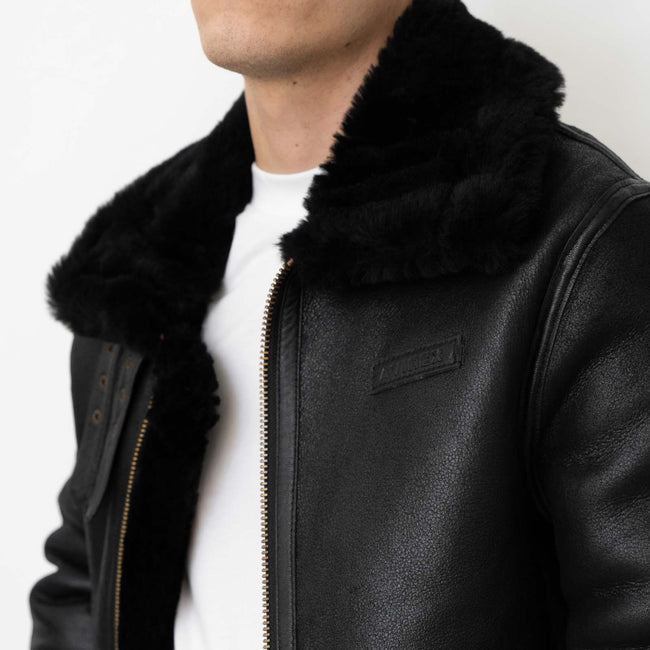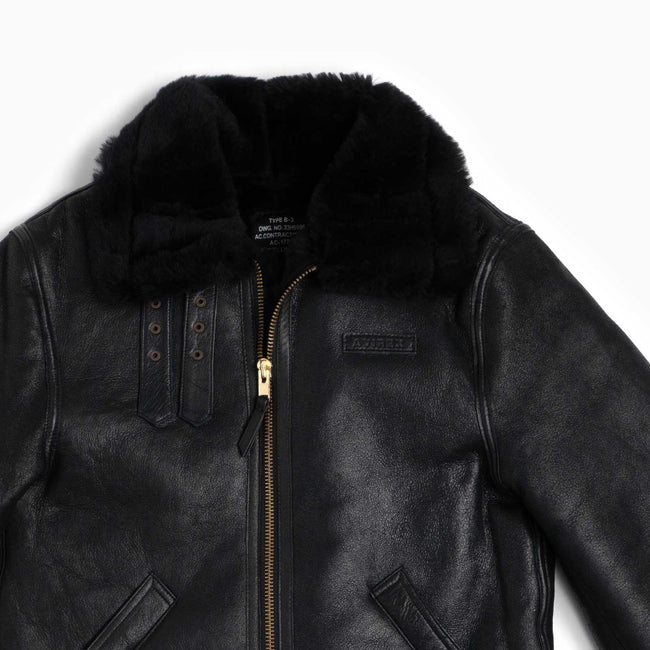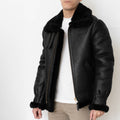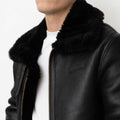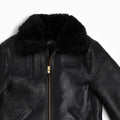Product Details
- Made of sheepskin for superior warmth and comfort
- Generous fit for a relaxed and comfortable look
- Shearling fur collar and lining for exceptional protection from the cold
- Sturdy zip fastening and leather details for a touch of style and durability
- Adjustable waist and cuff straps for a customisable fit
- Slanted front pockets, practical and perfect for keeping your hands warm
- Aviator jacket-inspired styling with the iconic Avirex logo embossed on the chest
- Model is 186 cm and wears a size Medium
Materials
Size & Fit
Shipping & Returns


Civilians generally call most aviator jackets “bomber jackets” but no one flying in a bomber could wear the most popular of the so-called “bomber jackets”, A2 and G1. Due to their light weight, A2 and G1 could only keep pilots warm at altitudes under 10,000 feet.B3 was probably brought into service around 1934, and most of the B3’s were made withhalf-inch pile, constructed of shearling pelts with fur inside and the leather out. The first jackets were matte finished and only by the late 1930s did they start to be dyed in seal brown. Lacquer was used to coat the jackets, but tended to crack with age. The B3 jacket came in many shapes and sizes: some had one collar closure strap, others had two. They might have one or two patch pockets and some had leather reinforcing patches that tapered from the shoulder towards the wrist. The wool pile was visible at the cuffs and the waist.
For the first men who wore our B3 jackets, work was inside a hunk of steel 30,000 feet up in the sky. And no plane saw more of those men than the B-17. They were built in Grand Rapids, Michigan or Seattle, Washington or Long Beach, California and burned up in fields in Belgium or Hungary or strewn across some obscure mile-wide Pacific island of “strategic importance”.

Civilians generally call most aviator jackets “bomber jackets” but no one flying in a bomber could wear the most popular of the so-called “bomber jackets”, A2 and G1. Due to their light weight, A2 and G1 could only keep pilots warm at altitudes under 10,000 feet.B3 was probably brought into service around 1934, and most of the B3’s were made withhalf-inch pile, constructed of shearling pelts with fur inside and the leather out. The first jackets were matte finished and only by the late 1930s did they start to be dyed in seal brown. Lacquer was used to coat the jackets, but tended to crack with age. The B3 jacket came in many shapes and sizes: some had one collar closure strap, others had two. They might have one or two patch pockets and some had leather reinforcing patches that tapered from the shoulder towards the wrist. The wool pile was visible at the cuffs and the waist.

For the first men who wore our B3 jackets, work was inside a hunk of steel 30,000 feet up in the sky. And no plane saw more of those men than the B-17. They were built in Grand Rapids, Michigan or Seattle, Washington or Long Beach, California and burned up in fields in Belgium or Hungary or strewn across some obscure mile-wide Pacific island of “strategic importance”.



